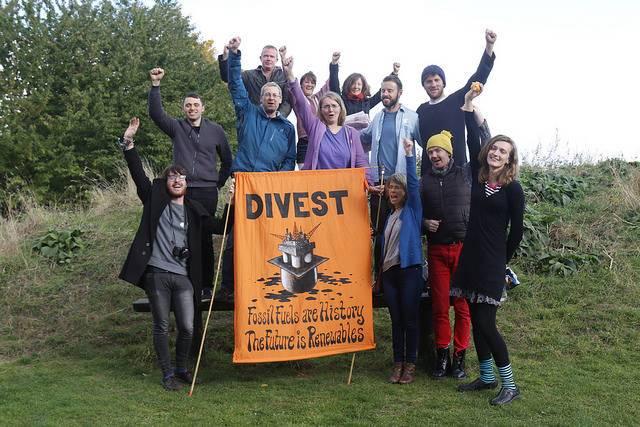L'Oreal Takes Eco-Certification Mainstream


On Tuesday, L'Oreal achieved silver certification from the nonprofit Cradle to Cradle Products Innovation Institute for its Biolage R.A.W. (Real - Authentic - Wholesome) haircare line, the company announced at the Sustainable Brands conference in Detroit.
L'Oreal says its R.A.W. shampoo and conditioner are made with "the highest levels of biodegradability." The shampoo is 99 percent biodegradable, the company said in a news release.
I always tread carefully when I read percentage-based health claims, as I worry about what sort of toxic heebie jeebies lurk in the remaining ingredients. Jay Bolus, president of certification services for MBDC, the company behind the Cradle-to-Cradle design framework, explains:
"Just because something is water-based or water-soluble does not necessarily mean it will biodegrade. But even if it does, the question is: What does it degrade into? Are the degragants more toxic than the parent compound?"In the case of L’Oreal, we determined that the formula is close to 100 percent biodegradable and it degrades into compounds that are nontoxic."
That's good news for our skin and the waterways where greywater from the shower may eventually drain.
Biolage R.A.W. contains a laundry list of natural ingredients including quinoa husk, honey, coconut oil and kaolin clay. The shampoo and conditioner are composed of 77 percent and 95 percent natural-origin ingredients respectively.
Of course, just because something is natural doesn't mean it's healthy. Bolus explained how the Cradle to Cradle Products Innovation Institute measures product wellness:
"All ingredients, regardless of their origins, are assessed against the 25 human and environmental health criteria in our methodology. Some natural materials (e.g. plant extracts, essential oils, etc.) are a complex combination of substances and have to be assessed slightly differently than a pure substance. But in any case, all ingredients go through a rigorous screening/assessment process."
Natural ingredients are often environmentally preferable because they usually come from "rapidly renewable resources," rather than from oil or other non-renewable petrochemicals, Bolus said.
Notably, while the R.A.W. line received a silver certification overall (a 3 out of 5 on the Cradle to Cradle certification scale), the products actually received a platinum score on the Material Health Assessment, which evaluates impact on human and environmental health -- arguably the most material issue for a personal care product.
The Cradle to Cradle product certification examines products across five categories:
- Material health: The toxicity of the ingredients in the product,
- Material reutilization: The volume of recycled content and product recyclability,
- Renewable energy and carbon management
- Water stewardship
- Social fairness
Each product receives a rating in each category as well as a list of recommendations for improvement. Companies have two years to demonstrate improvement against the listed recommendations or they won't be allowed to re-certify.
L'Oreal's recommended improvement areas are increased renewable energy and water stewardship. The firm now has the opportunity to improve its decontamination process so that the effluent water is clean enough to be reused in the manufacturing process.
Image courtesy of L'Oreal (press use only)
Embracing an Audience-First Approach to Sustainability Communications


By Guusje Bendeler
Research clearly indicates that today’s stakeholders expect more from companies — they want to purchase from and work for companies that champion sustainability. This shift in attitude is dramatically altering the way that companies conduct (and even think about) their businesses.
However, since modern audiences are accustomed to having loads of content provided to them at their fingertips, contemporary sustainability has given rise to a new type of challenge for many organizations. In addition to acting responsibly, companies are now expected to effectively communicate about this stuff — which can seem like a daunting task on its own.
We recently had an opportunity to discuss the relationship between sustainability and communications with Chris Librie, eBay’s senior director of global impact and giving. Librie is an expert communicator — skilled at drawing audiences into discussions about sustainability, business, and the intersection between the two — and our conversation showed us why. He was full of insights, opinions, and ideas (some of which had us laughing out loud).
What follows are a few of the takeaways from our discussion with him.
The gap between sustainability and marketing
Librie comes to sustainability from a unique vantage point. He specialized in marketing and communications prior to his work in sustainability, so he has an interesting take on how to bridge the gap between the two subjects.
“Earlier in my career when I was at S.C. Johnson — which is a company of brands — one of the reasons I had that role there was because I had been a marketer [before] and kind of understood the world of the marketer, which is to drive market share and deliver a P&L," Librie explained.
“It really helps to sit down with them and get into that. What are the issues that the consumer has with your product? We were able to find a number of those and develop them into sustainability programs.”
“Ultimately sustainability is a way to position a company for the long term, so you have to understand what the business is trying to accomplish to be able to put yourself in the marketer’s shoes.“
The role of annual sustainability reports
Librie was adamant that an annual sustainability report is not a good way to engage the vast majority of audiences. If an organization wants to engage the growing spectrum of stakeholders interested in sustainability, it must embrace a range of modern communication tactics.
To this end, he sees the role of the sustainability reporing shifting. Most organizations should continue to produce formal sustainability reports, but these should focus more exclusively on data, analysis, and explanations necessary to understand a company’s footprint. Reports should no longer be viewed as the place where companies try to tell their sustainability stories.
“The fact is that even if they’re really well-written, very few people read them.”
Leveraging digital communications effectively
As communicators move away from reports as the de facto place to tell sustainability stories, Librie sees the importance of digital communication tactics continuing to rise. Digital communications give organizations an opportunity to present “layers” of information. “I see a far larger role being played by websites, because a website can be interactive and updatable throughout the year. I think you can do a far better job of guiding people from a high level into more detail on a website than you can in a report.”
These tactics should be catered to different audiences, timely (supporting other things that are happening within the organization or in response to events going on in the world), and rolled out throughout the year.
Contextualizing sustainability and creating a voice
Many formal sustainability reports end up sounding like a “greatest hits” compilation of a company’s sustainability efforts. While this approach gives many organizations a much-needed platform where they can talk about their achievements, it doesn’t foster dialog with stakeholders — a key part of effectively communicating with modern audiences. Librie sees an opportunity for companies to learn how to connect the dots between what they are doing and what’s happening in the world around them.
“Increasingly, I think the opportunity for companies is to take a point of view on sustainability issues and talk about them with a voice — not just kind of in a ‘touting our latest achievement’ way, but actually getting into a dialogue with stakeholders.”
Audience-centric communications
As companies learn to adjust to new communications paradigms, audiences’ needs and expectations will continue to play a larger role in the future. As Librie put it: “I think a more audience-specific approach to sustainability communication is the way of the future. I think there was the period of the report — the period of GRI and all this kind of work that was very engineering- and compliance-driven. Now I think companies that are going in the right direction are saying, ‘Well, wait a second. Do we really need to be hidebound by that stuff? Can’t we take our own approach?’”
To learn more about how companies can connect purposeful sustainability with engaging communications tactics, read our full conversation with Chris Librie here.
Image credit: Pixabay
Guusje Bendeler is co-founder and Chief Strategy & Creative of thinkPARALLAX, a creative marketing and communications consultancy committed to building brands with purpose. Her work with clients such as Southwest Airlines, Qualcomm, International Paper, and Beam Suntory — has included overseeing the development and implementation of corporate brand strategies.
Market-Based Solutions To Create Good Jobs And Grow Local Economies


By Patrick Duggan
In today’s economy, the prevalence of “good jobs” is diminishing. Since America’s job market bottomed out at the close of the Great Recession, our economy has produced more than 14 million jobs and unemployment has dropped below 5 percent. That sounds great on paper, but the average American worker is experiencing a far different reality. Almost half of American workers make less than $15 per hour — and women and people of color are the worst off.
As the recent presidential election drove home, working Americans are awake to how policy and good jobs are tied together. When most of us think about government policy and working-class jobs these days, we think about policies that haven’t worked, and have benefited corporations and not American workers. But a slate of federal policies are already in place and already working. And with a few simple adjustments, they could be made much stronger and improve the wages, benefits, and workplaces of millions of American workers.
"More and more companies are recognizing that high-road workplace practices generate positive outcomes for workers and businesses. Jobs that provide good benefits, such as paid sick time, retirement and family leave, reduce employee turnover and create higher employee productivity and satisfaction,” says Richard Eidlin, co-founder and vice president of public policy at the American Sustainable Business Council. “However, public policies are also an essential compliment to increasing the quality of jobs.”
Our jobs problem – driven largely by globalization and technological advances that reduce the need for human labor – is too large and complex for individual businesses and investors to confront on their own. While businesses are the sources of job creation, government programs can incentive investment that leads to more jobs and to higher quality jobs.
The thing is, government doesn’t have to make massive, sweeping changes to start making a difference. The Surdna Foundation and Pacific Community Ventures released a new report on already existing, bipartisan, and common-sense federal policies and programs that can be adjusted or expanded to create more economic opportunity and more middle-class jobs in communities that have been left behind by globalization, automation, or generations of discrimination. The report explores that potential for smart, targeted public policies to encourage private sector investments in quality job creation.
“The lack of quality employment opportunities in America -- particularly for low-income people, communities of color, immigrants and women -- is a driver of widening inequality in our country. The scale and complexity of this problem requires that multiple approaches be taken to improve the availability and quality of American jobs, which will necessitate close coordination across the public, private, and social sectors,” says Shawn Escoffery, program director for strong local economies at the Surdna Foundation.
“At the Surdna Foundation we recognize that part of the solution is public policy, which is an important lever to encourage and support the growth of businesses that create quality jobs and strengthen their local economies. [This report] offers ideas for policy change at the federal level that can also be instructive for policymakers working at the state and local level. We are pleased to support this research from PCV and hope policymakers across the country will find this report helpful in improving jobs for American workers.”
The report’s recommendations are numerous and varied, and can be classified in the three categories: financial incentives for quality job creators, increased transparency pertaining to job quality, and the establishment of job quality standards for businesses and investors participating in certain government programs. Recommendations include the following:
- Collect and analyze the data we already have on the quality of jobs supported by Small Business Administration programs, and introduce job quality provisions to existing loan programs
- Incentivize banks and businesses to invest in American workers by including job quality in their existing lending requirements, tax credits, and public reporting.
- Use the government’s purchasing power to create good jobs by prioritizing quality job-creating companies when awarding government contracts
Government sets the rules for how our financial markets work – and whether or not those markets serve mainly investors or empower businesses to create good jobs for working people. This report doubles-down on what’s working and lays out five market-based solutions to create good jobs and grow local economies.
“These are common-sense ways, that are already on our books, that Washington can unleash business to create good jobs in underserved communities,” says Mary Jo Cook, president and CEO of Pacific Community ventures. “Our report doubles-down on what’s working and lays out five market-based solutions to create good jobs and grow local economies.”
Since the end of the Great Recession, most new jobs have been in low-wage occupations and at places like strip malls and fast-food restaurants, and many parts of the country have been skipped over. By making common-sense changes to federal policies and programs that are already on the books, we can incentive better quality jobs for tens of millions of Americans in a way that helps small businesses and working people thrive and brings the American Dream to underserved communities.
Creating good jobs for working people in every community across America is one goal everyone can agree on. Doing so by making bipartisan government programs that are already working do even more for us is a recipe for success that all of our elected representatives can champion.
Image credit: Pixabay
Patrick Duggan is the Director of Pacific Community Ventures.
Pacific Community Ventures is a nonprofit social enterprise that engages small businesses, investors, and policymakers to build an economy that works for everyone. To achieve our mission we provide small businesses working in underserved communities with access to the capital and expertise needed to successfully grow their businesses and create good jobs, test new business tools and approaches which can be scaled through partnerships, and conduct research and evaluation so that impact investors will deploy more capital more effectively to underserved communities.
How We Can Advance Sustainability Despite an Absent EPA


By Daphne Stanford
Despite the Donald Trump administration’s determination to roll back as many environmental protections and regulations as possible, a substantial number of companies are interested in supporting regulations that help protect the environment. Most TriplePundit readers are likely familiar with the letter signed by nearly 400 companies, nonprofit organizations, colleges, and universities asking President Trump to ensure the U.S. remains dedicated to the Paris climate agreement, as well as policies that fight climate change.
With looming federal cuts and the imminent closure of the EPA’s environmental justice office, our air, water and public lands need all the help they can get. How can companies and nonprofit organizations help pick up the slack even further? The good news is that concerned citizens have the opportunity to join forces by choosing to support companies and organizations working against climate change and systemic oppression.
There are a few ways you can do this: by not only choosing to patronize brands that value people over profit when we can, but also by becoming citizens who are more involved in our democratic process, by divesting from fossil fuels and supporting companies that divest from fossil fuels, and by joining the staff of a company or organization that works toward furthering sustainability and human rights efforts. Here are a few examples of how to apply these concepts in concrete terms.
Conscious citizenship
I was going to dedicate a section of this article to how much of a difference we can make by supporting ethical companies. However, I’d rather focus on how all consumerism is largely a distraction — ‘conscious’ or not — and how it’s more important to call or fax our representatives, attend town hall meetings, donate to causes we believe in, and vote.Of course, part of being an active part of our community is to support local growers at farmers’ markets and other local goods manufacturers and small businesses. However, if we want to help enact lasting change, we need to spend less time shopping for objects online and more time speaking out about issues that matter to us.
Divestment from fossil fuels
If you’re not sure where to get started with divestment from fossil fuels, begin with your bank account; most major national banks are heavily invested in fossil fuel companies that encourage unnecessary, harmful drilling and mining practices that exacerbate carbon emission levels. Consider opening a checking account at a local credit union or community development bank — two types of institutions known to invest heavily in their communities.Second, if you have a financial portfolio with stocks and mutual funds, here is a guide to fossil free investing put out by Green America. Other ways you can support clean energy financially are by utilizing alternative transportation such as bicycles and public transportation, driving a hybrid vehicle, or investing in a solar photovoltaic (PV) system for your home.
Joining the effort
Lastly, consider working for an organization that supports sustainability, or look into working with the sustainability director at your company — perhaps even becoming a sustainability or energy efficiency specialist. In fact, jobs focusing on ‘energy efficiency’ have grown by 500 percent since 2010. That’s not an insignificant amount, by any stretch of the imagination!You might also consider going into a career in human services, especially considering the need companies have for corporate responsibility outreach and marketing efforts aimed at reaching out to the community. You may be charged with ordering supplies produced with a sustainable carbon footprint, or working with local organizations to provide volunteer opportunities for employees to help clean up trash along a local river, or helping with community-wide recycling efforts. You may also be charged with ensuring that employees’ 401(k) portfolios are invested in clean energy, rather than fossil fuels. The marketing of these efforts is also good for business, since it will attract socially conscious clientele interested in working with sustainability-minded companies.
* * *
What are some practical ways individuals and businesses — either in your own office or in your community — are acting to fight against loosened federal regulations protecting the environment? Share your experience in the comments section, below.Image Source: Fossil Free Greater Manchester
Daphne Stanford hosts “The Poetry Show!” on KRBX, her local community radio station, every Sunday at 5 p.m. A writer of poetry, nonfiction, and lyric essays, her favorite pastimes include hiking, bicycling, and good conversation with friends and family. Follow her on Twitter @TPS_on_KRBX.
Human rights rise to top of business agenda


London Stock Exchange's ESG reporting guidance responds to investors


Google Sued Over a Culture of Leaks Mixed with Intimidation


It turns out members of the Donald Trump administration are not the only ones in perpetual freak-out mode over allegations of leaks, leaks and more leaks.
The same culture of paranoia, fear and retribution is reportedly going on at Google, the Silicon Valley titan that represents all that is wonderful, and dubious, about the technology sector. The IT giant behind America's favorite search engine, a leading smartphone operating system and perhaps the future autonomous self-driving technology has not taken kindly to any on-the-sly talks that some of its employees have with the media, or for that matter, anyone outside the company.
Like many of its peers and competitors, Google fosters a culture of secrecy and is fiercely protective of intellectual property. The company requires its employees to sign non-disclosure or confidentially agreements to preclude any release of proprietary information.
The problem, however, is two-fold. First, some employees say they were fired over this policy even though they did not speak with the press. In addition, Google’s actions may violate California’s labor laws, according to several experts.
The tension led a former employee to file suit against Google late last year, months after its confidentiality policy resulted in a complaint with the National Labor Relations Board.
The litigation outlines a bevy of accusations, including an alleged Google policy that warns employees not to document any observations of potential wrongdoing within the company over the risk that it could fall into the hands of law enforcement officials or regulators. The lawsuit charges that confidentiality rules are so stringent that an employee could not even write fiction about “someone working at a tech company in Silicon Valley” without Google approving the final draft.
But what is almost amusing about these shenanigans is how Google’s concern over leaks led to a curious all-employee email. Executives were reportedly in a fit of pique over memes and jokes about Tony Fadell, CEO of Nest, the smart thermostat and home device company that's part of Google's larger Alphabet family. Complaints about Nest’s work culture, mostly in the form of memes, were leaked to tech blogs including Recode.
The email began with an ominous, all-caps disclaimer: “INTERNAL ONLY. REALLY.” Such warnings are usually successful in sparking the opposite kind of behavior.
The nasty-gram, written by a former U.S. State Department agent tasked with clamping down on leaks at Google, invited more mockery with its blend of threats to fire employees with cajoling to stop such talks with outsiders since “it also betrays the values that make [Google] a community.”
That kind of warning only motivates a disgruntled employee to push that email out, despite the company’s generous benefits ranging from complimentary cafeteria food to free autonomous rides if they happen to live near the company’s headquarters in Mountain View.
From Google’s point of view, such measures are necessary to protect its business. After all, when you’re on top of the mountain, many competitors are doing what they can climb up and join you at the peak. Witness, for example, the epic lawsuit Google filed against Uber over allegations that a former employee made off with self-driving car trade secrets, only to join Uber several months later.
But Google’s obsession with extreme secrecy risks poisoning the relationship it has with its best-in-class employees, and is turning into a case study of what not to do on the employee engagement front.
Image credit: Luis Villa del Campo/Flickr
P&G, 3M, IP and American Forest Foundation Boost Responsible Forestry in the Carolinas


If there is a definition for business and non-profit “collaboration,” then a new partnership between Procter & Gamble (P&G), 3M, International Paper (IP) and the American Forest Foundation (AFF) sets a very high bar. The three companies announced at Sustainable Brands in Detroit that they will work with AFF to boost sustainable forestry efforts across the coastal Carolinas region.
The project, which will continue for at least three years, will receive almost $300,000 in funding from P&G, IP and 3M. The goal is to engage and educate landowners across several counties in North and South Carolina in order to highlight the benefits of various forest certifications and sustainable forestry practices.
By 2020, the Carolinas Working Forests Conservation Collaborative will strive to achieve several goals, including:
- Increase awareness and understanding of the importance of sustainable forestry and active management among the thousands of woodland owners, who together own 2.4 million acres of forestland in the Carolina coastal plains region.
- Partner with at least 450 landowners across 36,500 acres across various counties to provide them with technical assistance and resources to enhance forest management.
- Engage a minimum of 160 woodland owners within the project area to enhance, restore or expand coastal forests and quality habitat for at-risk species on at least 13,000 acres.
TriplePundit sat down with Manuel Ceja, Family Care Sustainability Leader at P&G, during Sustainable Brands Detroit to learn more about the program.
AFF staff will conduct the outreach and training with individual landowners in order to bolster sustainable forestry efforts across the region. As individual trees are harvested by IP, pulp from both hard and soft wood fibers will be sold to P&G and 3M. The long fiber pulp in particular is important to P&G, as Ceja explained that it allows branded products such as Charmin, Puffs and Bounty to be “soft and strong,” as their customers have come to expect over the years.
But in return for the occasional harvest of selected trees, landowners will benefit from a reliable source of revenue on their terms, while ecosystems across the coastal Carolinas have a greater chance to thrive. Such an extensive outreach effort by AFF is important as 87 percent of forests in the U.S. south are in private hands, according to World Resources Institute estimates. Two-thirds of those lands are owned by individuals and families, many of whom held the land for generations.
Meanwhile, the coastal plains of the Carolinas confront a bevy of deforestation and other environmental challenges, from development to climate change and even sea level rise. As a result, there are approximately 500 at-risk species across the forests of the Southern U.S., which are dispersed across these privately-owned lands.
"Landowners don't know what they have, and they don't know how to protect it,” explained Paul DeLong, Senior Vice President of Conservation for the American Forest Foundation.
But this partnership will allow AFF to work with thousands more landowners. AFF will provide the education that will convince more owners to jump on this conservation bandwagon. The organization uses "local boots on the ground," a source of economic development, to provide responsible forestry training, which will include pointers on fostering ecosystems that will harbor the at-risk species, as well as what is involved in selecting the trees that will be sold to a responsible timber company.
The program is similar to a partnership P&G has launched with the pulp and paper supplier Domtar, which in turn works with local landowners in Arkansas, Louisiana, Missouri and Texas on sustainable forestry and conservation initiatives.
P&G says all of the pulp and paper within its supply chain is certified one way or another, but the holy grail is certification from the Forest Stewardship Council (FSC). The problem P&G and other consumer packaged goods (CPG) companies have faced, however, is that there is not enough FSC supply to meet demand. This forestry program in the Carolinas will offer a lift to P&G’s long-term goal. One step in that process is the company’s announcement that its Puffs line of products will all be FSC certified by the end of this summer.
This partnership is a win for 3M as well, as the company will have more certified fiber for its wide range of products, from sticky notes to packing tape. “The sustainable practices this project enables will provide lasting benefits to landowners, forests, and our business,” said Jean Bennington Sweeney, Chief Sustainability Officer of 3M.
Image credit: Gary Dincher/Flickr
Clean Energy Employs Almost 10 Million People Worldwide


Despite political volatility, the low cost of fossil fuels and infrastructure challenges, 9.8 million people worked in the clean energy sector worldwide as of 2016. That is a 1.1 percent increase from the previous year and an increase of an additional 2.1 million people in 2014.
The International Renewable Agency (IRENA), an intergovernmental organization based in Abu Dhabi, announced the numbers in its most recent annual jobs report.
When employment within large hydropower projects is excluded, the total amount of jobs across the world within the renewables industry totals 8.3 million people.
The increase in employment in what many still describe as a nascent industry is in stark contrast to job opportunities within the fossil fuels sector. IRENA has estimated that in 2015 and 2016, 400,000 people in the oil and gas industry across the world lost their jobs – and 40 percent of those losses occurred within the U.S. alone. Furthermore, the decrease in employment within the coal sector is hardly an American phenomenon. IRENA has noted that China closed 5,600 coal mines last year, which could lead to the loss of as many as 1.3 million jobs. Similar trends are underway in India, where the country’s largest coal producer has alone shed 185,000 jobs.
Solar led the way in the global renewables boom last year. The addition of 71 gigawatts worldwide boosted employment within the sector by 12 percent for a total of 3.1 million jobs. China accounted for half of those job increases, but head count in the U.S. industry grew as well with a 24 percent increase to 241,000 jobs. In India, solar power investment has been one of the keystones of Prime Minister Narendra Modi’s domestic policy, and those efforts have begun to pay off as employment surged 17 percent to 121,000 jobs. And in addition to those usual suspects, Bangladesh has also seen its solar power sector rapidly surge, with 140,000 jobs now attributed to that industry.
The liquid biofuels industry is the world’s second largest renewables employer, with over 1.7 million people working within the sector. The transformation of crops into fuel has been controversial across the world, with the European Union recently voting to ban palm oil as a source for biofuels. Most of the new jobs linked to this industry are within the agricultural sector, with growth occurring largely in Latin America and Southeast Asia.
While employment in the wind power industry has not grown at the same pace as solar, the sector overall is still in growth mode. IRENA estimates that 1.2 million across the world now work for the industry, a 7 percent increase from 2015. Employment in the U.S. spiked 28 percent to just over 100,000 jobs, remarkable as the country has still not gone anywhere close to tapping its offshore wind power potential. The U.S. joined with Germany, Brazil and India to account for 35 percent of new capacity addition. IRENA sees continued growth in the wind power industry, and projects the sector to support 3 million jobs by 2030.
IRENA has also enumerated job growth in emerging economies. The agency views renewables as key to energy security as well as economic development in much of Africa, and the numbers suggest growth is underway – from the 26,000 jobs in South Africa to Rwanda’s 7,000 new jobs last year.
By 2030, the total amount of clean energy jobs globally could surpass 24 million; that is, if training and education can catch up with the growing demand for skills, and countries stay committed to their climate change goals.
Image credit: Brahma Kumaris/Flickr
Lawsuits Brew Against Scott Pruitt, EPA for Illegal Legislative 'Obstructions'


Few if any of President Donald Trump's appointees have stirred up as much controversy as Scott Pruitt, the Environmental Protection Agency's (EPA) new administrator.
In March, the Oklahoma Bar Association launched an investigation into whether Pruitt lied under oath during his confirmation hearing for the position. According to a compliant the Bar is investigating, Pruitt allegedly lied when he told senators he never used a personal email address to conduct business during his tenure as Oklahoma's attorney general.
An Oklahoma judge ordered the EPA to turn over thousands of pages of communication between Pruitt and representatives of the fossil fuel industry.
He has also been taken to task for his views on climate change. Pruitt admitted to reporters earlier this year that he does "not agree" that human activity is a "primary contributor to the global warming that we see."
Still, a divided Congress speedily confirmed Pruitt, prompting some to suggest that his confirmation had been rushed through in anticipation of a ballooning investigation.
This month, the Center for Biological Diversity (CBD) added a couple of lawsuits to the list of challenges facing Pruitt's embattled administration. The first and most interesting is a suit alleging that Pruitt is "obstructing environmental laws on behalf of the [oil and gas] industry" by not finalizing deadlines for the District of Columbia and city of Philadelphia to meet environmental laws backing clean air standards. Under the Clean Air Act, the EPA is required to establish "national ambient air quality standards, the Center said.
"But more than eight years later, it has failed to finalize deadlines to ensure that Washington, D.C. and Philadelphia have reduced ozone pollution to healthy levels," the Center said in a May 3 press release.
In February, Pruitt pledged to impose new limits on the EPA's enforcement of clean air and water rules. He defended the decision by stating that the courts had already "called into question the legality of those laws." There are many who would disagree.
Still, latest developments suggest that Pruitt's already figured a two-prong mechanism for crippling the federal mandate to regulate pollution and carbon emissions. The first is the 14 lawsuits he launched against the EPA as attorney general of Oklahoma (according to the Environmental Defense Fund and the New York Times, all but one were filed in cooperation with industry donors.
The second is his plan to disable clean environment laws as the EPA's administrator before those lawsuits finish winding through the courts.
According to the CBD, lawyers for the EPA told an appeals judge recently that the agency is considering rolling the Clean Air Act to the 2008 benchmark, rather than enforcing current standards.
The EPA is also being sued by the CBD for failing to comply with a court's order to turn over public documents. The CED is alleging that the emails and Pruitt's daily itinerary will reveal that he has been "hiding" controversial meetings with oil and gas execs.
The Center has sued the Trump administration more than 11 times since Trump took office, joining partnership with farmers and environmental groups to challenge actions that the CBD says puts communities at risk. The CBD and advocates will have a tough battle ahead with a White House administration that believes fervently that denying the existence of climate change is enough justification to wipe out environmental laws. The question is how the nation will pick up the pieces both environmentally and financially when the Trump administration is finished with its mandate of dismantling the protections Americans have come to count on.
Image credit: Flickr/Nasa Goodard Space Center